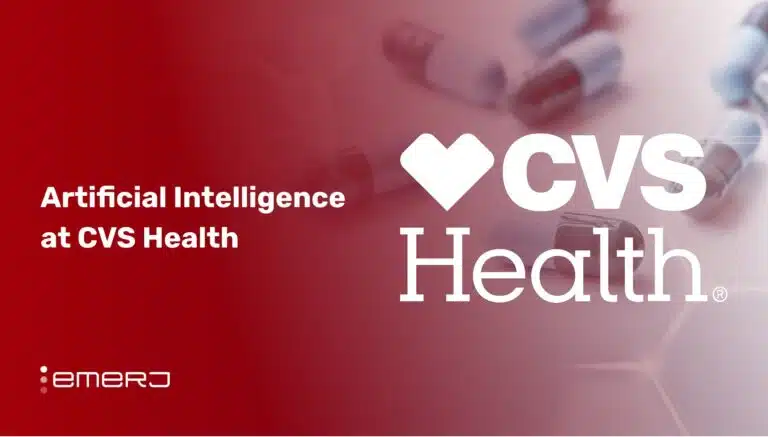The landscape of preventative healthcare and genetic research is “awakening” with data, enabling earlier and more precise disease risk prediction. The evolution is particularly critical as the healthcare industry shifts from reactive treatment to proactive care.
Integrating advanced capabilities with genomic data allows researchers and clinicians to analyze vast numbers of genetic variants, providing more accurate insights into disease susceptibility and informing early intervention strategies.
Academic research has shown that AI-driven methods improve cardiovascular disease prediction beyond traditional clinical models, emphasizing the value of machine learning in preventative care.
A scoping review from eClinicalMedicine explores how artificial intelligence (AI) supports personalized medicine in cardiovascular disease (CVD) risk assessment. Analyzing 121 studies, it highlights AI’s ability to identify genetic biomarkers, enhance risk prediction, and inform tailored treatments.
Simultaneously, gene-editing tools like CRISPR are being paired with AI capabilities to enhance the design of targeted therapies and minimize off-target effects, accelerating precision medicine advances.
A recent review published in Frontiers in Bioengineering and Biotechnology highlights how artificial intelligence (AI) is enhancing CRISPR-based genome editing by improving guide RNA design, minimizing off-target effects, and optimizing editing strategies. These advancements are particularly significant for treating genetic diseases such as cancer, sickle cell anemia, and Alzheimer’s.
As these technologies and methodologies mature, business leaders in healthcare and life sciences are increasingly investing in data infrastructure, AI governance, and cross-disciplinary teams to operationalize these tools.
The ability to harness AI for risk prediction and genomic precision isn’t just a research frontier — it’s quickly becoming a competitive imperative for organizations aiming to deliver personalized care at scale.
Emerj Editorial Director Matthew DeMello recently spoke with Dr. Dan Elton, Staff Scientist at the National Human Genome Research Institute (NHGRI) at the National Institutes of Health (NIH), on the ‘AI in Business’ podcast to explore these topics. This article examines two critical insights from their conversation:
- Advancing polygenic risk prediction with AI: Leverage complex enhanced polygenic models to expedite rare disease risk assessment and preventative care.
- Integrating AI with CRISPR for precision gene editing: Streamlining gene editing accuracy for adeno-associated viruses (AAVs) by leveraging machine learning to save researchers from time-consuming trial-and-error lab work.
Listen to the full episode below:
Guest: Dr. Dan Elton, Researcher, the National Human Genome Research Institute
Expertise: AI in genomics, polygenic risk prediction, biomedical data science
Brief Recognition: Dr. Elton has worked at the intersection of AI and healthcare for years, including previous roles at Mass General Brigham and his current work with the NIH. His expertise spans predictive modeling, radiology applications, and genomics-focused AI research.
Advancing Polygenic Risk Prediction With AI
Traditional disease prediction methods have relied heavily on family history and specific genetic mutations. While these approaches have merit, many health traits — such as height, cardiovascular disease, and neurodevelopmental disorders — are polygenic, influenced by hundreds or even thousands of genes acting together.
Dr. Elton outlines how these complex traits require more sophisticated modeling than the linear regression tools commonly used today.
Polygenic risk prediction uses a wide array of genetic variants, or polymorphisms, to estimate an individual’s likelihood of developing certain diseases. Until now, most models in this space have used linear regression with sparsity constraints. He considers these effective, but limited in capturing the full complexity of genetic interactions.
According to Dr. Elton, neural networks and other non-linear AI models offer a promising next step, capable of detecting intricate relationships among genes that linear models cannot:
“We know that the way genes are associated with phenotypes is not simply linear — there’s a lot of non-linearities as well,” Dr. Elton explained. “So I think LLMs and other neural net-type models will be used in the future to improve this sort of prediction.”
– Dr. Dan Elton, Researcher at the National Human Genome Research Institute
One of the challenges in adopting neural networks for polygenic risk prediction is the substantial data requirement. Dr. Elton estimates that predicting traits like height or assessing risks for conditions such as autism or intelligence would necessitate analyzing between 300,000 and 700,000 genetic sequences, amounting to tens of trillions of data points.
That’s on par with the scale of training data used in models like GPT-4. These enormous data demands help explain why such AI-driven risk prediction hasn’t yet become mainstream.
Despite the logistical challenges, Dr. Elton believes the benefits are clear. AI-enhanced polygenic modeling could enable more precise disease forecasting, allowing healthcare systems to intervene earlier and more effectively.
By proactively identifying at-risk individuals, Dr. Elton notes clinicians can offer targeted screenings, preventative therapies, and tailored lifestyle recommendations — all of which reduce downstream treatment costs and improve patient outcomes.
Dr. Elton then points out that, as AI models improve and datasets expand through public-private genomic initiatives, the feasibility of non-linear modeling in clinical settings is becoming more realistic. For healthcare executives and innovation leaders, building the organizational capacity to ingest, manage, and ethically apply such data will be key.
Institutions that begin investing now in both talent and infrastructure will be best positioned to deliver the next generation of data-driven, personalized care.
While Elton acknowledged that current linear models already perform well for traits like height, he emphasized that non-linear models, such as neural networks, will likely play a growing role as data availability improves.
He noted that using these more advanced models could help capture gene-to-gene interactions that linear approaches miss. As genomic datasets grow through initiatives collecting hundreds of thousands of sequences, the potential to apply deep learning in clinical risk prediction becomes more realistic.
Although these methods have yet to reach clinical implementation, Dr. Elton suggests that they represent a future direction for improving genetic forecasting.
Integrating AI With CRISPR For Precision Gene Editing
The introduction of CRISPR-Cas9 marked a major milestone in biotechnology, allowing for highly targeted genetic edits. However, as Dr. Elton explains, successful gene editing depends on more than the CRISPR tool itself—it also hinges on precise delivery methods and careful design of the supporting components. He denotes that it is in these areas of radical technological development in genetics that AI is beginning to play a crucial role.
One key challenge in gene editing is delivering the CRISPR machinery to the correct tissues without affecting others. Dr. Elton highlights the use of adeno-associated viruses (AAVs) as delivery vehicles, which must be engineered to enter only the intended cells.
He notes that companies like Asimov Bio are applying AI to optimize AAV design, saving researchers from time-consuming trial-and-error lab work. This use of machine learning mirrors how AI is used in drug design — not to replace human expertise but to accelerate iteration and improve specificity.
“There’s a company called Asimov, and they’re using AI to help with AAV design. It’s actually kind of similar to how AI is being used for drug design — but here, you’re designing the quote ‘delivery vehicle’ for the gene editor.”
– Dr. Dan Elton, Researcher at the National Human Genome Research Institute
AI also supports the development of guide RNAs (gRNAs), which direct CRISPR to the correct section of DNA. Poorly designed gRNAs can lead to off-target effects, potentially editing multiple unintended locations in the genome. Dr. Elton notes that AI models can help mitigate these risks by predicting the precision and efficacy of gRNA designs before being tested in the lab, improving safety and efficiency.
While Dr. Elton stops short of naming current LLM-based systems used for designing CRISPR editors, he suggests this is a natural next step. He envisions specialized AI tools being developed to assist in designing guide RNAs, modeling interactions with DNA, and refining delivery systems for more complex gene therapies. AI-enhanced RNA design is especially critical as gene editing expands beyond easily accessible tissues like blood to more challenging targets such as the liver or brain.
Dr. Elton also asserts to the executive podcast audience that the convergence of AI and CRISPR is not only enhancing the science of gene editing but also opening commercial pathways for new therapies.
From biotech startups to major pharmaceutical firms, organizations that embrace AI-assisted gene therapy development stand to accelerate R&D timelines, reduce clinical risk, and deliver more targeted treatments. As precision medicine becomes mainstream, AI will be a driving force behind scalable, safe, and effective genomic interventions.
While Elton didn’t name specific LLMs currently used in this space, he noted the potential for future models designed specifically for gene editing applications.
These models could assist in refining guide RNA design and delivery methods, especially as editing moves beyond red blood cells to more difficult-to-target organs like the liver. The inherent biological complexity reinforces the need for continued AI development tailored to biological systems rather than relying on generalized commercial models.
Elton also emphasized that challenges in CRISPR delivery and guide RNA targeting often require extensive trial-and-error in current workflows. AI’s ability to reduce this burden by predicting tissue specificity and minimizing off-target edits could accelerate progress significantly.
As new therapeutic use cases emerge, the integration of AI tools purpose-built for genetic editing may play a central role in advancing safe and effective applications in clinical settings.



















